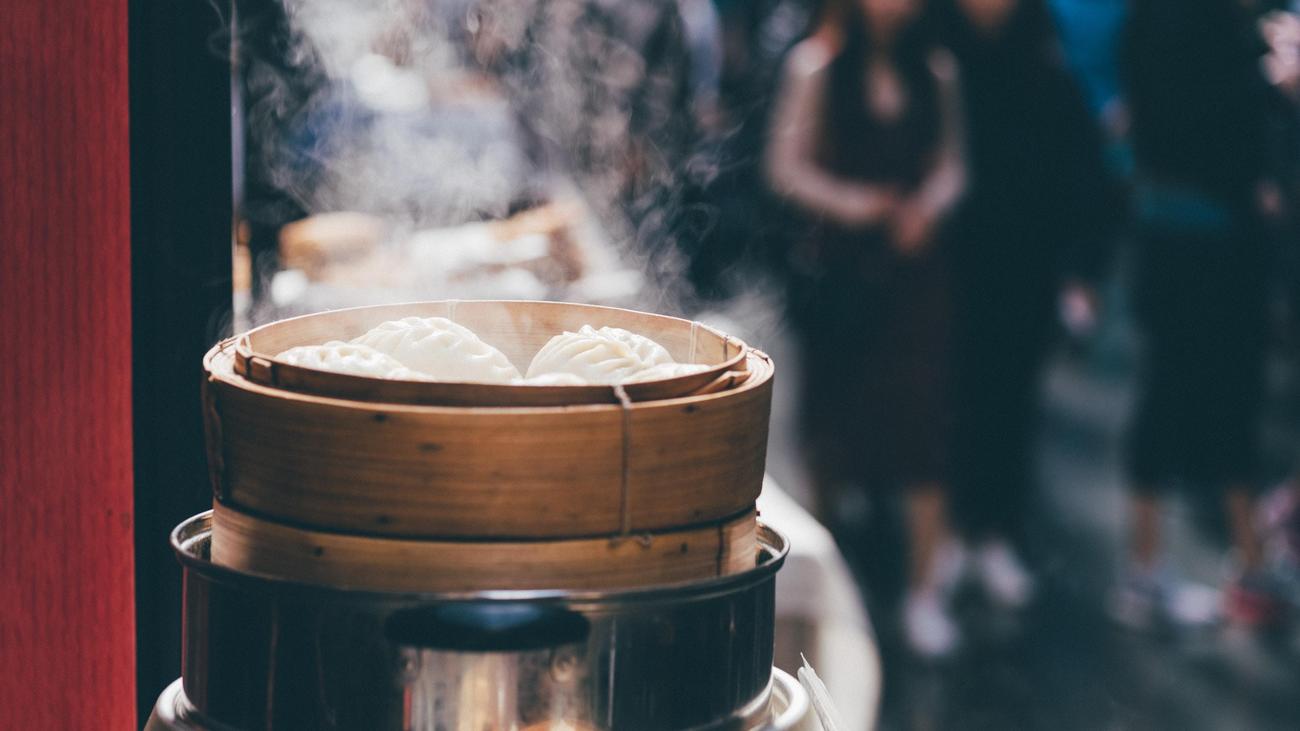Discover Delicious and Delightful Fun Facts About Dumplings! If you’re a passionate food enthusiast like me, then you’re in for a treat. In this article, we will take a deep dive into the fascinating history of dumplings. These delectable little parcels of joy are loved and cherished in many cultures around the world, each with their own unique twist and flavors. From the humble origins of dumplings to their rise as a global culinary phenomenon, we will explore how these delightful morsels have evolved and continue to captivate taste buds worldwide. So sit back, relax, and get ready to embark on a mouthwatering journey through the history of dumplings!

Discover Fascinating Fun Facts About Dumplings!
Dumplings, those delectable pocketed wonders of the culinary world, have a rich history and cultural significance that goes beyond their scrumptious taste. Let’s embark on an exciting journey to unravel the fun facts about dumplings that will leave you craving both their delightful flavors and the intriguing stories behind them.
Dumplings: The Original On-the-Go Food
Imagine a quick, satisfying meal or snack that you can devour on the move. No need for fancy cutlery or a table setting. That’s where dumplings come in! These versatile delicacies were born as street food, perfect for busy people seeking a flavorful bite as they went about their daily lives.
“Dumplings: the ultimate on-the-go food that combines convenience with a burst of irresistible flavors!”
Dumplings: Empire Builders and Fortune Favors
Dumplings have not only filled stomachs but also played a role in shaping vast empires and accumulating fortunes throughout history. In ancient China, emperors would indulge in lavish banquets where dumplings symbolized prosperity and a feast fit for royalty. In fact, the wealthiest individuals flaunted their status by savoring dumplings stuffed with expensive ingredients like shark fin and abalone.
“From building empires to filling fortunes – dumplings have left their mark on history, satisfying both stomachs and ambitions.”
Dumplings: A Treat for the Senses and the Soul
Beyond their culinary appeal, dumplings possess religious and medicinal qualities that add an extra layer of reverence and significance. In various cultures, these little treasures are used in traditional ceremonies, symbolizing prosperity, good luck, and even an offering to departed spirits. Moreover, the ingredients used in dumplings are thought to have medicinal properties, making them a sort of healing potion for various ailments.
“Dumplings: not just a treat for the taste buds, but a sensory delight that nourishes both body and soul.”
Dumplings: The Key to the Ear-Resistible
It may come as a surprise, but dumplings have an interesting association with the ears, particularly in Chinese culture. The shape of certain dumplings resembles that of an ear, and there is a delightful legend behind it. According to Chinese folklore, the legendary physician Zhang Zhongjing created the very first dumpling during the 3rd century. The specific purpose? To treat frostbitten ears. Talk about a tasty tale!
“Ear-Resistible dumplings: the legend behind their fascinating association with the ears is as delightful as their taste!”
Dumplings: A Global Gastronomic Extravaganza
Dumplings are not confined to a single cuisine or culture. These delightful bites exist in various forms all around the world, each reflecting the unique flavors and culinary traditions of its region. From Chinese jiaozi to Italian ravioli, Polish pierogi to Japanese gyoza, exploring the countless dumpling variations is akin to embarking on a global gastronomic adventure.
“Join us on a mouthwatering journey across continents as we explore the world’s diverse dumpling delights!”
Dumplings: A Peasant’s Palate Pleaser
In times of hardship and scarcity, dumplings served as a savior for peasants. With limited access to meat, they would ingeniously stretch their supplies by incorporating fillers like vegetables and grains into their dumplings. This made them a cost-effective and hearty option that filled hungry bellies without breaking the bank.
“Dumplings: the humble hero of peasants, turning meager ingredients into a delectable, budget-friendly feast.”
Dumplings: Chinese New Year’s Delight
The Chinese New Year celebration wouldn’t be complete without dumplings. These delightful morsels take center stage during the festive season, symbolizing wealth and good luck for the year ahead. Families come together to wrap and share dumplings, making it a joyous occasion filled with laughter, warmth, and, of course, delicious food.
“As the Chinese New Year approaches, dumplings take the spotlight, bringing a taste of prosperity and togetherness to every table.”
Dumplings: Unlocking Ancient Flavors
Centuries ago, ancient Chinese dumplings were not limited to just meat fillings. They contained a delightful variety of ingredients, such as nuts, dates, and other flavorful surprises. These diverse flavors created a culinary symphony, elevating the humble dumpling to a unique and unforgettable taste experience.
“Ancient Chinese dumplings: where flavors danced, embracing not just meat but a medley of nuts, dates, and other tantalizing fillings.”
With their fascinating history, cultural significance, and mouthwatering variations, dumplings truly are a treasure trove of joy and discovery. So, the next time you savor a dumpling, let your taste buds be in awe not only of the delicious flavors but also of the delightful world behind them.
“Dumplings: where history, culture, and flavors intertwine to create a truly delightful experience that tantalizes both the taste buds and the mind!”
Fun Facts About Dumplings
Did you know that dumplings are not just delicious, but also incredibly versatile? Whether you’re a fan of savory fillings or prefer a sweet surprise, dumplings have something for everyone. From traditional Asian flavors to unique twists from around the world, there is an endless variety to explore. If you’ve ever wondered how to make soup dumplings, we have you covered. Just click here to discover the step-by-step process: how to make soup dumplings.
Looking to dive into comfort food? Chicken and dumplings is the ultimate dish that will warm your soul. The combination of tender chicken stew and fluffy dumplings is simply irresistible. Curious about the recipe? Click here to find out how to make chicken and dumplings like a pro: how do you make chicken and dumplings.
Did you ever find yourself with a bag of frozen dumplings and wonder how to cook them to perfection? Look no further! We have the ultimate guide on how long to steam frozen dumplings. Whether you prefer a soft texture or a slightly chewy bite, we’ll share all the tips and tricks. Discover the secrets by clicking here: how long to steam frozen dumplings.
Dumplings are not just a tasty treat; they are a culinary adventure waiting to happen. So why wait? Dive into the world of dumplings and explore these delicious recipes and techniques. Your taste buds will thank you!
History Of Dumplings
Dumplings, those pocketed wonders of culinary delight, have a history that stretches back over a millennium. Their origins can be traced to ancient China where the first dumplings were crafted with a filling of minced meat and vegetables wrapped in a thin dough. It’s fascinating to think that the Chinese had already mastered the art of grinding flour over 300 years prior, leading to the creation of noodles and eventually giving birth to these delectable dumplings.
“The Chinese, always ahead of the curve, paved the way for the dumpling revolution by perfecting the delicate balance of flavors encased within a tender embrace of dough.”
But dumplings didn’t remain confined to China alone. The Romans, too, had an early encounter with these delightful morsels. In fact, the first written dumpling recipe appeared in a Roman cookery manuscript called Apicius around A.D. 400. It seems that dumplings, with their universal appeal, transcended borders and found a home across cultures and continents.
“The Romans couldn’t resist the lure of dumplings either, as they sought to recreate the Asian charm of these delectable parcels in their own kitchens.”
Fast-forward to the 1950s and 1960s when Chinese immigrants brought the art of dumpling-making to new lands. These dumplings became a vital lifeline during harsh winters, providing comfort and sustenance in unfamiliar surroundings. They offered a taste of home and a reminder of the family traditions left behind.
“Dumplings became the warm embrace of heritage for Chinese immigrants, carrying them through the coldest of winters with memories of their homeland wrapped within their sumptuous folds.”
While dumplings have evolved and developed unique regional variations, their history serves as a reminder of the humble beginnings that sparked a global obsession. From humble street food to imperial courts, dumplings have traversed class barriers and become woven into the fabric of culinary heritage.
“Just like the travelers of yore, dumplings have embarked on a journey across time and space, adapting and transforming themselves to capture the essence and flavors of each unique region they encounter.”
Table:
| Dumplings in History | Countries |
|---|---|
| Ancient China | China, Japan, Korea, Tibet |
| Ancient Rome | Italy, Spain |
| Chinese immigrants | United States, Australia |
As we delve deeper into the delicious world of dumplings, there’s one thing that’s abundantly clear – the history of dumplings is rich with stories, flavors, and traditions that truly deserve our admiration. So, let’s continue on this tantalizing journey, exploring the techniques, fillings, and cultural significance that make dumplings a global treasure.
In the next installment, we shall uncover the innovative techniques that have elevated dumpling-making to an art form and unravel the secrets behind the diverse fillings that tempt our taste buds.
Dumplings Around the World: A Culinary Journey
[youtube v=”iHqzHrEFFTU”]
Overview
Dumplings are a beloved delicacy that can be found in various forms across different cultures. From China to Italy, dumplings have evolved and adapted to reflect the unique flavors and culinary traditions of each region. In this article, we will explore the rich history and diverse variations of dumplings around the world.
Dumplings: A Journey Across Time and Space
- Dumplings have a history that spans over a millennium and can be traced back to ancient China.
- Ancient Chinese dumplings were created using finely ground flour, a technique that the Chinese had mastered over 300 years prior to the invention of dumplings.
- The first written recipe for dumplings appeared in a Roman cookery manuscript around A.D. 400, indicating that the Romans also had encounters with these delightful parcels of goodness.
“The history of dumplings showcases their journey across time and space.”
Dumplings: A Universal Delicacy
- Dumplings can be found in many countries, including China, Japan, Korea, Tibet, Italy, Spain, the United States, and Australia.
- Each region has developed its own unique variations of dumplings, incorporating local ingredients and cooking techniques.
- Chinese immigrants played a significant role in spreading the art of dumpling-making to new lands during the 1950s and 1960s.
- Dumplings became especially important for Chinese immigrants during harsh winters, providing comfort and reminding them of their homeland.
“The history of dumplings is rich with stories, flavors, and traditions.”
Exploring Dumpling Variations
- Chinese Dumplings:
- Chinese dumplings are a central part of the Chinese New Year celebration, symbolizing wealth and good luck.
- They come in various shapes and fillings, offering a diverse and unforgettable taste experience.
Traditional Chinese dumplings were developed as street food, perfect for eating on the go.
Italian Dumplings:
Some historians believe that Arab conquerors brought dumplings to Sicily between the 9th and 11th centuries, leading to the creation of Italian dumpling-shaped pastas like gnocchi.
Turkish Dumplings:
Turkish dumplings, known as “manti,” are often stuffed with ingredients like lamb and mixed with garlic, yogurt, and melted butter. They are then topped with herbs and spices.
Korean Dumplings:
- In Korea, dumplings known as “mandu” are often enjoyed with local foods such as kimchi. They were possibly introduced during the Mongol Empire’s rule.
“Each region has its own unique take on dumplings, adding to the culinary diversity and richness of this beloved dish.”
Conclusion
Dumplings have played a significant role in shaping empires, accumulating wealth, and bringing comfort to people throughout history. Despite their different origins and variations, dumplings are universally cherished and celebrated. Whether you prefer Chinese, Italian, Turkish, or Korean dumplings, there is a dumpling out there for everyone to enjoy. So, let’s celebrate the rich history and diverse flavors of dumplings from around the world.
“The complex and mysterious web of culinary influences has contributed to the diverse and divine nature of dumplings.”

FAQ
Q: Are dumplings a traditional food?
A: Yes, dumplings have a long history and are considered a traditional food in many cultures, including China. They have been enjoyed for over 1,000 years and are beloved for their delicious taste and versatility.
Q: What ingredients are used to make dumplings?
A: The ingredients for dumplings vary depending on the region and recipe. However, the most common ingredients include minced meat (such as pork or chicken), vegetables (like cabbage or leeks), and seasonings. The filling is then wrapped in a thin dough made with flour, water, and sometimes eggs.
Q: How are dumplings typically cooked?
A: Dumplings can be cooked in various ways, including boiling, steaming, frying, or even baking. Boiling and steaming are the most common methods, as they result in tender and juicy dumplings. However, some people also enjoy pan-frying dumplings to create a crisp and golden exterior.
Q: Can dumplings be vegetarian or vegan?
A: Absolutely! While many traditional dumplings contain meat, there are numerous vegetarian and vegan options available. Instead of meat, these dumplings often feature a combination of vegetables, tofu, mushrooms, or other plant-based proteins. They are equally delicious and offer a tasty alternative for those with dietary restrictions or personal preferences.
Q: Can dumplings be frozen and reheated?
A: Yes, dumplings can be frozen for later consumption. To freeze dumplings, arrange them in a single layer on a baking sheet and place them in the freezer until they are firm. Once frozen, transfer the dumplings to a resealable plastic bag or airtight container. They can be stored in the freezer for up to three months. When ready to eat, simply cook the frozen dumplings following the original cooking instructions or adjust the cooking time accordingly.












